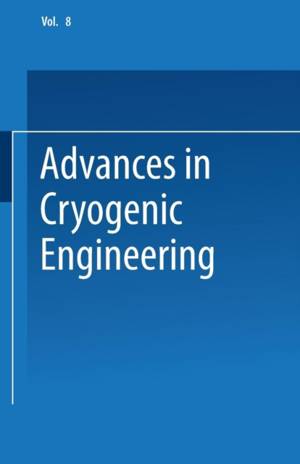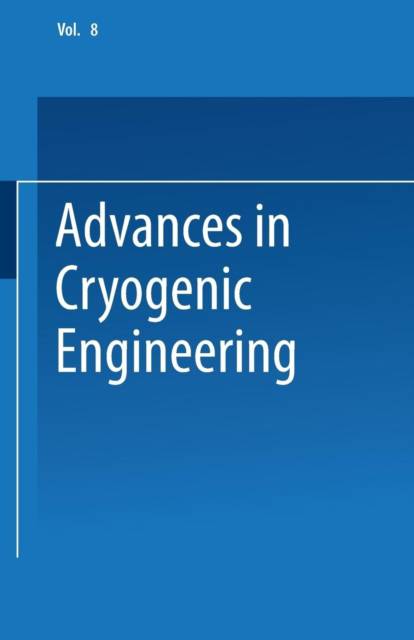
- Afhalen na 1 uur in een winkel met voorraad
- Gratis thuislevering in België vanaf € 30
- Ruim aanbod met 7 miljoen producten
- Afhalen na 1 uur in een winkel met voorraad
- Gratis thuislevering in België vanaf € 30
- Ruim aanbod met 7 miljoen producten
Zoeken
Advances in Cryogenic Engineering
Proceedings of the 1962 Cryogenic Engineering Conference University of California Los Angeles, California August 14-16, 1962
K D Timmerhaus
€ 153,95
+ 307 punten
Uitvoering
Omschrijving
The Cryogenic Engineering Conference celebrated its Silver Anniversary at the 1979 Conference held at Madison, Wisconsin. For many it provided an opportunity to reminisce about the first Cryogenic Engineering Conference convened at the National Bureau of Standards in Boulder, Colorado and also about the many following conferences and advances that had been reported at these conferences. It is difficult to realize that the first Cryogenic Engineering Conference was held before the advent of multilayer insulation, the space age, large-scale LNG Operations and superconductivity applications. The evolution of these activities has been carefully recorded in past volumes of the Advances in Cryogenic Engineering. . Once again, the Cryogenic Engineering Conference is happy to have had the International Cryogenic Materials Conference cohost this meeting at the University of Wisconsin. Collaboration between these two conferences has proven to be mutually beneficial by providing the cryogenic engineer with an in-depth exposure to materials properties, selection, and utilization to complement the exposure to new applications and design concepts. The papers presented at this joint conference as part of the International Cryogenic Materials Conference will be published as Volume 26 of the Advances in Cryogenic Engineering.
Specificaties
Betrokkenen
- Auteur(s):
- Uitgeverij:
Inhoud
- Aantal bladzijden:
- 701
- Taal:
- Engels
- Reeks:
- Reeksnummer:
- nr. 8
Eigenschappen
- Productcode (EAN):
- 9781475705300
- Verschijningsdatum:
- 9/01/2014
- Uitvoering:
- Paperback
- Formaat:
- Trade paperback (VS)
- Afmetingen:
- 140 mm x 216 mm
- Gewicht:
- 816 g

Alleen bij Standaard Boekhandel
+ 307 punten op je klantenkaart van Standaard Boekhandel
Beoordelingen
We publiceren alleen reviews die voldoen aan de voorwaarden voor reviews. Bekijk onze voorwaarden voor reviews.











